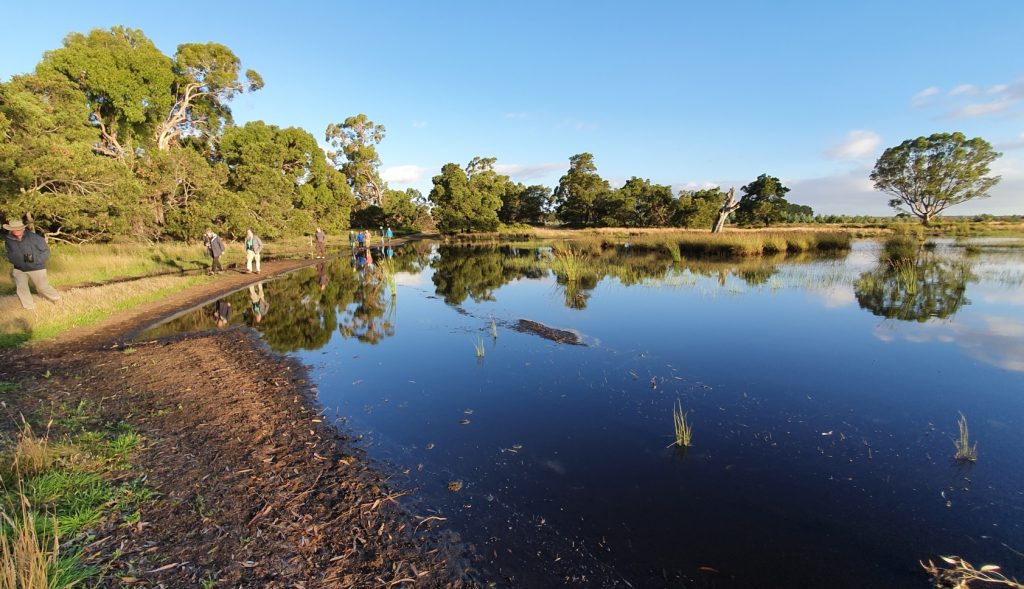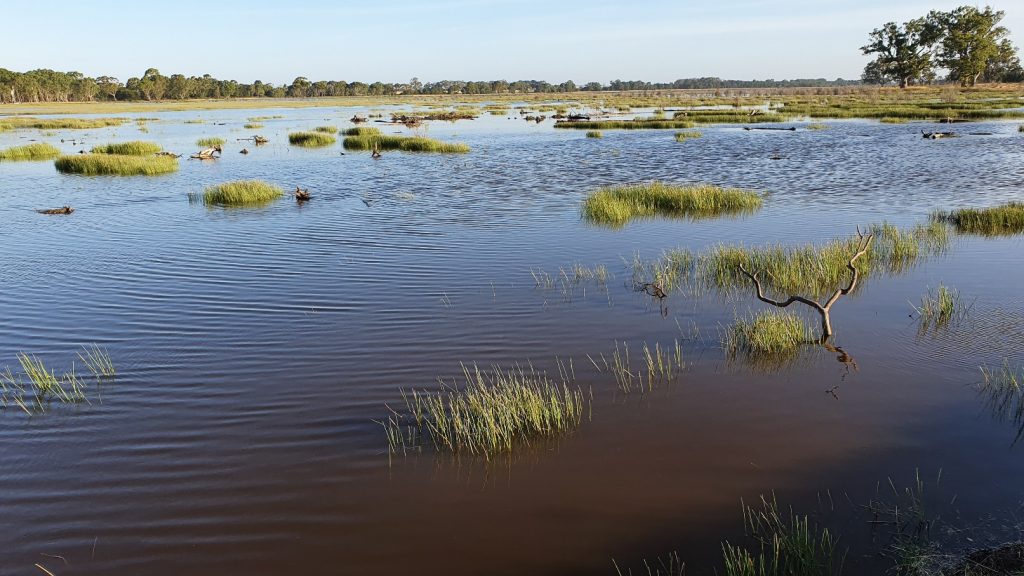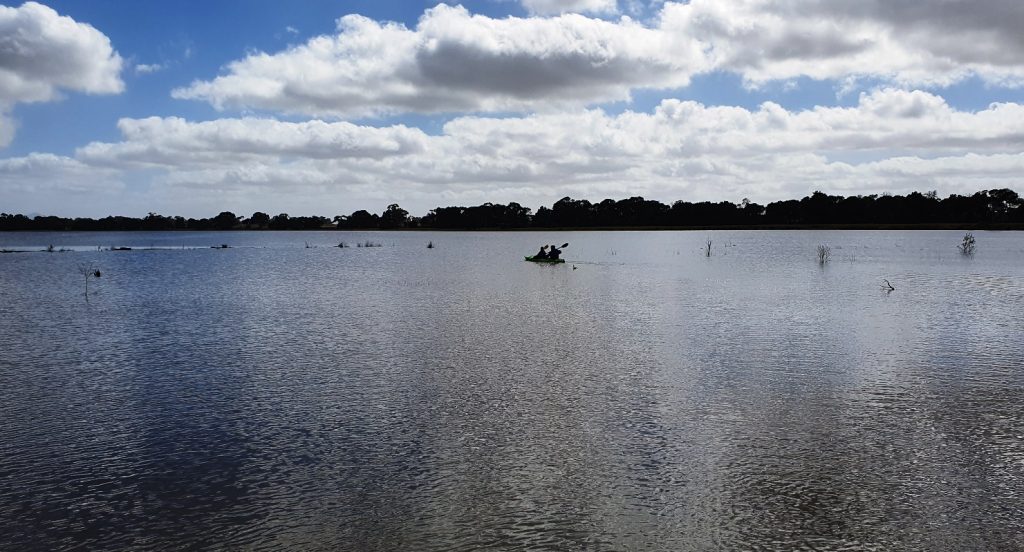NGT friends and supporters drop in at Walker Swamp
Wild, windy, cold weather made it feel more like August than January for much of my stay, but fortunately this didn’t deter the more than 30 visitors who popped in at different times to catch up and say g’day over the five days I spent camping out last week at Walker Swamp.

As well as having a chat over a hot cuppa and a biscuit, this also provided me with a gradual opportunity to explore most of the property on foot – especially the eastern half of the reserve which is still holding a lot of water. In fact, thanks to the cool summer and top-up rains, it is still only about 15 cm below full-supply level, which is giving the unfolding restoration process a huge kick along.

Notice how in the image above, the mudflats around the water’s edge are now being exposed?
This process is being repeated across vast areas of Walker Swamp and the sustained high water levels over the past three months have not only eliminated most of the weeds from this previously inundated zone, but at the same time have also provided an opportunity for our first flush of River Red Gum seedling recruits to begin to emerge below the high water mark. Also as a result of this process, the wetland plants that have hung on or appeared around the wetland edge so far, now also have the upper hand as they set seed for the first time since restoration. In short, we expect to see many wetland areas (like those above) transformed over the years ahead, with increasing habitat complexity and diversity returning. The vast shallows and mudflats of Walker Swamp are also going to provide vital feeding habitat and resources for birds over the coming autumn months as wetlands elsewhere in the region dry out.
At the northern end of Walker Swamp, the process of vegetation recovery is a little more more advanced, given that this part of the wetland inundated first in 2019 and is now getting its second fill in two years. You will see the evidence of this below…


Due to the rugged weather on Days 2 and 3, it wasn’t until Day 4 that I could even think about getting some of our guests that day out onto the water to experience Walker Swamp from the peace and serenity of a kayak. For those who missed out, there will be another opportunity – I promise!

To everyone who came and said hello, thanks for dropping in. I caught up with NGT supporters from near and far, some of our wonderful neighbours and even one of our resident, very healthy echidnas!
I found this to be a wonderful way to catch up properly with you all, without the normal ‘rush and bustle’ of hosting a big community event – which as you know we had to cancel last spring. I am also extremely humbled to see what the project at Walker Swamp now means to so many people, and we look forward to continuing to share this special place with you over the years ahead.
PS – If you missed out having a hosted look around this time, please get in touch and we can help you organise a self-guided tour (noting that access to NGT’s Walker Swamp Reserve, outside the viewing tower area and car park, is by arrangement / appointment only.)

